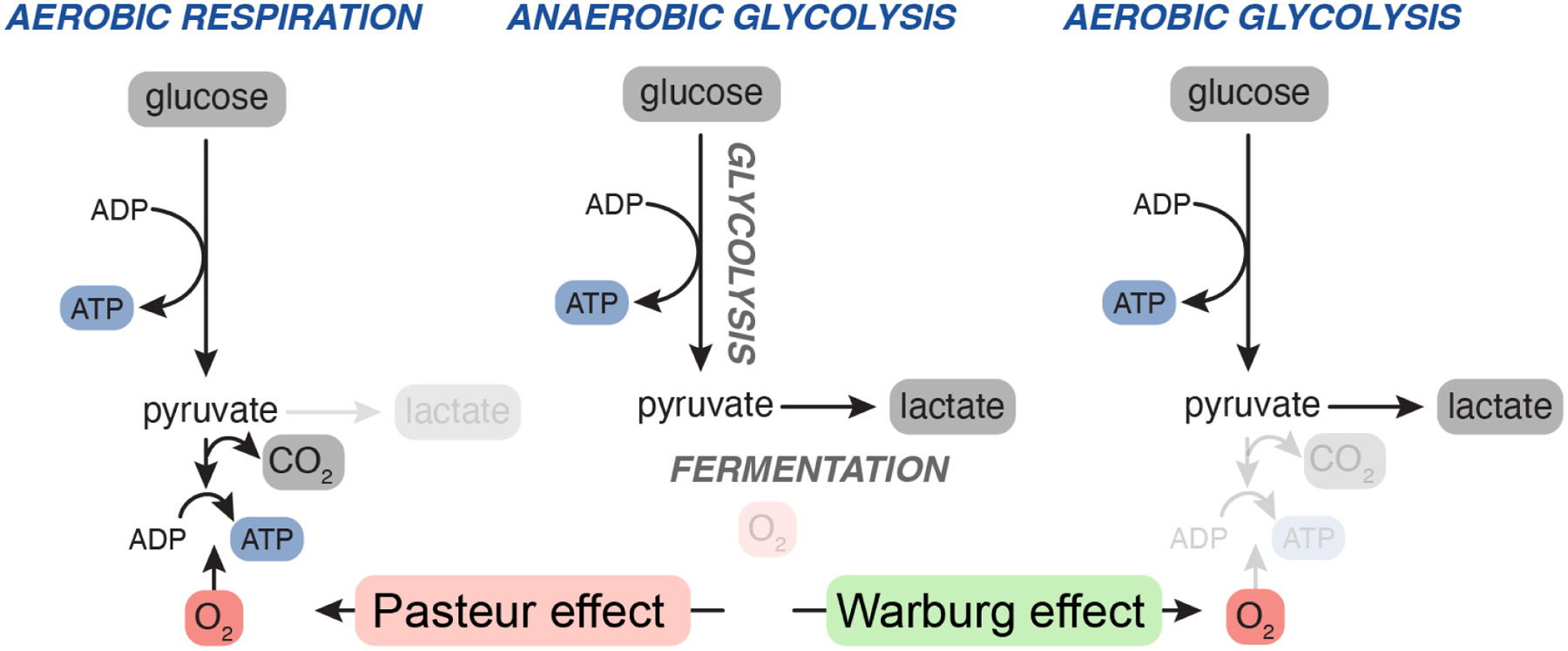Figure 1. Warburg and Pasteur effects.

When oxygen is not present, the glycolytic breakdown of sugars (such as glucose) is sustained by converting the glycolytic end-product pyruvate to ethanol or lactate in a process known as fermentation (middle). Fermentation allows organisms to generate ATP from sugar without oxygen. The Pasteur effect describes the phenomenon in which oxygen suppresses fermentation by allowing organisms to oxidize pyruvate to carbon dioxide (left). The Warburg effect refers to the persistent fermentation (lactate production) of mammalian cells even when oxygen is abundant (right).
